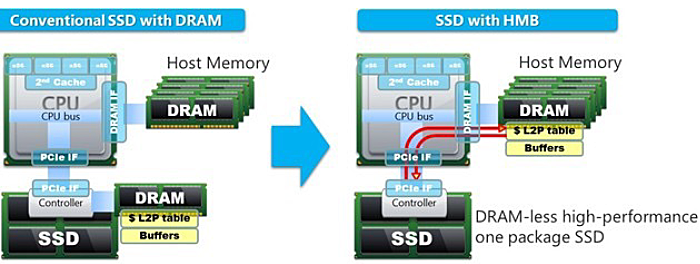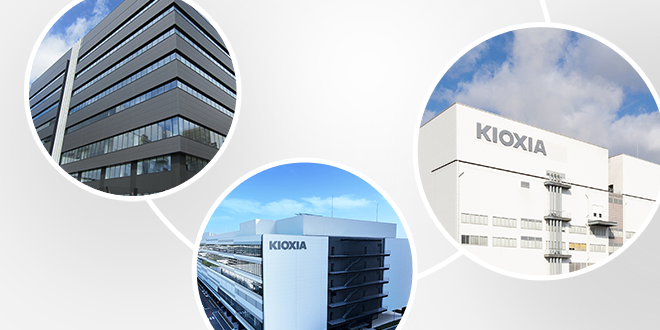Please select your location and preferred language where available.
HMB (Host Memory Buffer) technology for DRAM-less SSDs
August 28, 2018
Recently, laptop computers are becoming thinner and thinner, and built-in SSDs are required to be smaller in size, as well as lower in cost. But if the DRAM on an SSD is eliminated to reduce the number of SSD parts, it generally degrades the data read/write performance of the SSD.
We have successfully developed HMB (Host Memory Buffer) technology to realize a DRAM-less, high-performance, one-package SSD. HMB technology utilizes part of the host memory (DRAM) as if it were its own, and achieves equivalent performance to an SSD with DRAM.
As cooperation between the host driver and SSD is necessary, we developed HMB protocols for booting and connection, and have them incorporate PCIe® SSD interface standard, NVMe™ 1.2* with major CPU/OS vendors.
A DRAM-less, high-performance, one-package SSD with HMB technology is now a product of our SSD division, called BG series SSD. It is also one of our main consumer SSD products. We will continue to develop advanced technologies for high-performance, small, and low-cost SSDs.

- An interface specification developed for SSDs
NVMe is a trademark of NVMe Express, Inc. PCIe is registered trademark of PCI-SIG.

